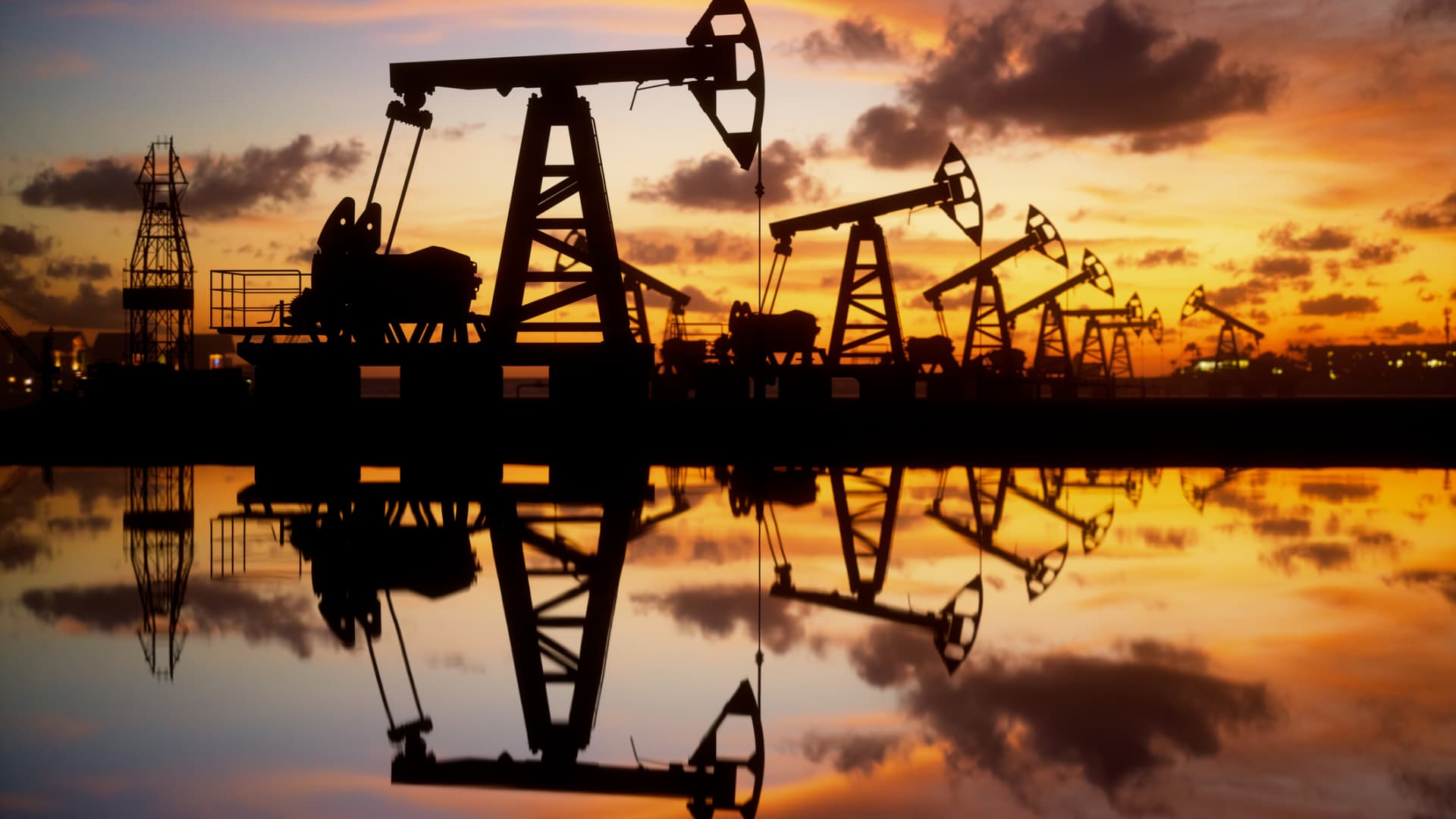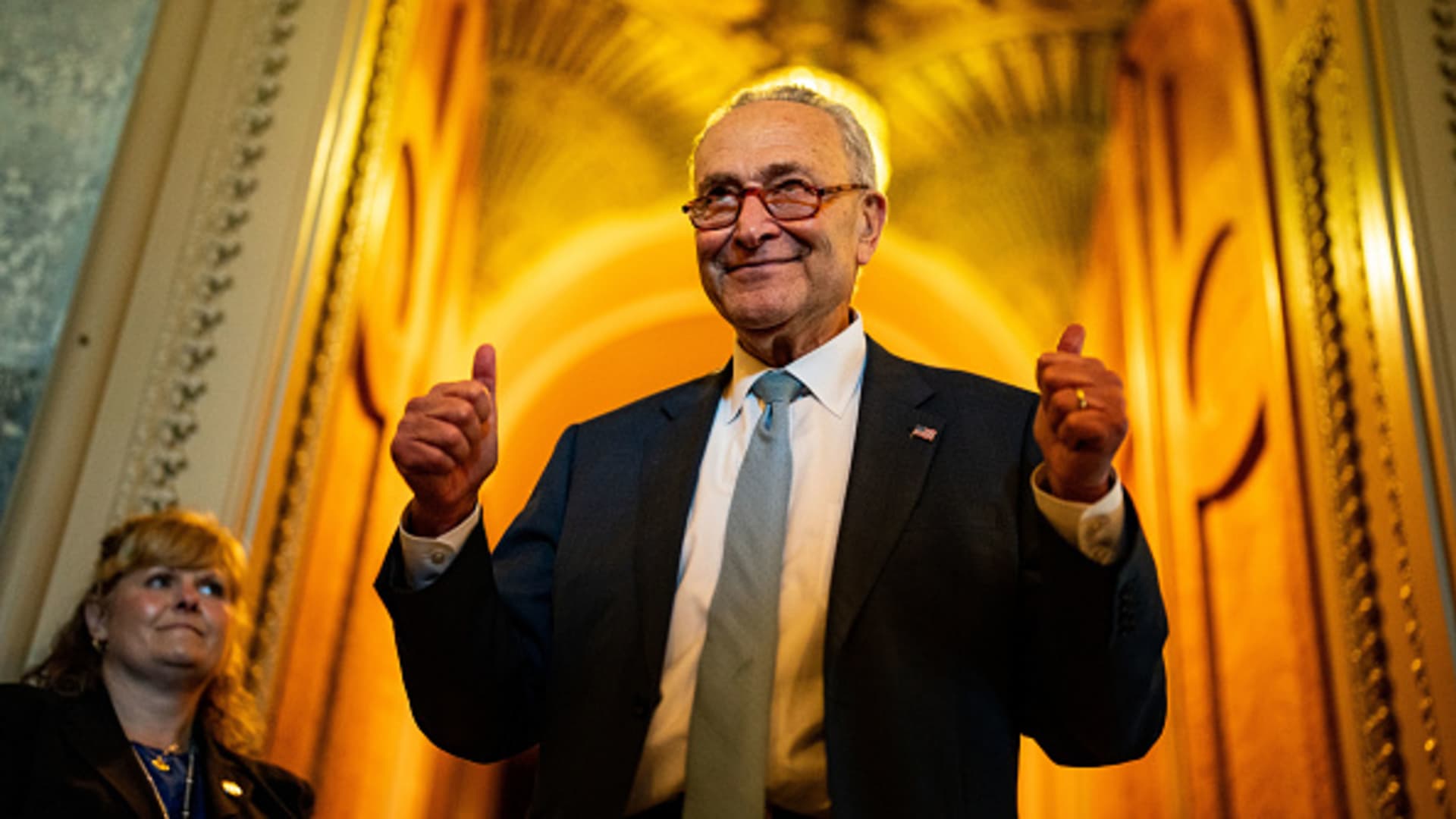Big Oil’s refusal to boost production has nothing to do with greed â here’s the real reason


We need more oil, there is no question about it — crude prices are up because supply can’t keep up with current demand. But we likely won’t get more oil out of U.S. producers anytime soon. As noted in Jim Cramer’s ” Morning Thoughts” and our “Morning Meeting” for Club members, Pioneer Natural Resources (PXD) CEO Scott Sheffield declined the Biden Administration’s request for oil companies to increase crude production. Pioneer is only going to grow at 5% per year and oil will stay over $100 per barrel for a long time, Sheffield told investors at a JPMorgan conference last week. He said he was a firm believer that $100 to $120 oil is not going to cause demand destruction, adding that inventory will remain low over the next five years. The initial reaction to the stance held by Pioneer — and many others in the industry — may cause outrage. The view is that greedy oil companies want to maximize profits at the expense of hard-working Americans. After all, the national average for a gallon of gasoline topped $5 on June 11, just a little more than one week before the official start of summer, which ushers in the busy driving season. Gasoline, in the past week, has backed off those highs as oil prices softened a bit. Given that hardship for consumers and businesses alike, the solution seems simple: Energy companies should just pump more oil that can be turned into gas, or increase the refining capacity for the oil already out of the ground, or both. This is exactly what President Joe Biden was angling for when he summoned oil executives to the White House last week for an emergency meeting with Energy Secretary Jennifer Granholm. But boosting output won’t fix the problem. The reason is lead time, or the gap between when a decision is made to produce more oil and the date on which pumping or more importantly refining can begin. In a recent Dallas Fed Energy Survey of exploration and production companies, 81% said it would take anywhere from 4 to 12 months. While that doesn’t sound too bad and one might argue it could lead to meaningful lower prices at the pump in under a year’s time. But it doesn’t take into account that the oil still needs to be refined before it is usable. That’s the even bigger issue here. According to the Energy Information Administration’s Short-Term Energy Outlook , U.S. refinery utilization is expected to average 94% in the third quarter of 2022. Put another way, the industry is already refining the crude oil on hand about as fast as it can. This is partly due to the fact that since 2019, operable refining capacity has declined by about 900,000 barrels per day. That’s not surprising. Until recently, the calls from Washington have been for far less fossil fuel usage and an accelerated move toward green energy. This push made permits for new refineries harder to come by and more expensive, meaning the returns became less attractive. As a result less money was allocated to sustaining and growing refining capacity. But with inflation spiking at the pump and at the grocery store and pretty much everywhere you turn, pressure has been building to make sure there are enough legacy energy sources to run the world as more sustainable forms of energy are developed. The real question is not how fast we can start pulling more oil out of the ground — but rather, how fast can we get another refinery up and running? Building an entirely new plant can take years. In a 2020 article from Forbes, William Prentice, chairman and CEO of Meridian Energy Group, which is building the first refining facility from the ground up since 1976, noted that construction of the Davis Refinery would take about three years. That’s not even counting all the years that went into simply acquiring the permit to build in the first place. The Davis Refinery will be built in the “heart of the Bakken” in Belfield, N.D., according to the company. So, even if producers and refiners said right here, right now that they would invest whatever it took to increase the supply of refined oil, we likely wouldn’t see the fruits of that labor until the the back half of the decade. Oil companies are unwilling to invest in new projects that would require billions of dollars of investment today for returns they wouldn’t see until several years from now. And that delay alone causes uncertainty because there is no way of knowing how much that refined oil will sell for then; once prices do come back down, there will likely be renewed calls for less dependence on fossil fuels. In the end, barring demand destruction resulting from a recession, higher energy prices are likely here to stay for the foreseeable future as there simply is no quick fix to the lack of supply and understandably no appetite for longer-term planning on behalf of the producers and refiners. The kneejerk reaction may be anger directed at producers and refiners. But these companies and their shareholders have been burned time and again by taking a production-growth-at-any-cost view of capital allocation. They are simply unwilling to return to that practice given the uncertainty of where prices will be by the time they can sell the oil and the near-certainty that the politics of the moment will pass as oil and gasoline prices come back down. For now, Pioneer and many other energy companies, such as fellow Club name Devon Energy (DVN), have been content to return excess cash to shareholders through dividends and buybacks. That, of course, is one of the reasons we have bought so heavily into oil stocks for the portfolio. In fact, Devon CEO Rick Muncrief told the Club way back in March , when oil prices were first surging on Russia’s unprovoked invasion of Ukraine, that the company would not increase oil production. Nearly four months later, Pioneer is holding the line — and if Sheffield is correct and the price of oil stays elevated for years, these stocks can continue to benefit and act as an inflation hedge. (Jim Cramer’s Charitable Trust is long PXD and DVN. See here for a full list of the stocks.) As a subscriber to the CNBC Investing Club with Jim Cramer, you will receive a trade alert before Jim makes a trade. Jim waits 45 minutes after sending a trade alert before buying or selling a stock in his charitable trust’s portfolio. If Jim has talked about a stock on CNBC TV, he waits 72 hours after issuing the trade alert before executing the trade. THE ABOVE INVESTING CLUB INFORMATION IS SUBJECT TO OUR TERMS AND CONDITIONS AND PRIVACY POLICY , TOGETHER WITH OUR DISCLAIMER . NO FIDUCIARY OBLIGATION OR DUTY EXISTS, OR IS CREATED, BY VIRTUE OF YOUR RECEIPT OF ANY INFORMATION PROVIDED IN CONNECTION WITH THE INVESTING CLUB. NO SPECIFIC OUTCOME OR PROFIT IS GUARANTEED.
This post has been syndicated from a third-party source. View the original article here.




